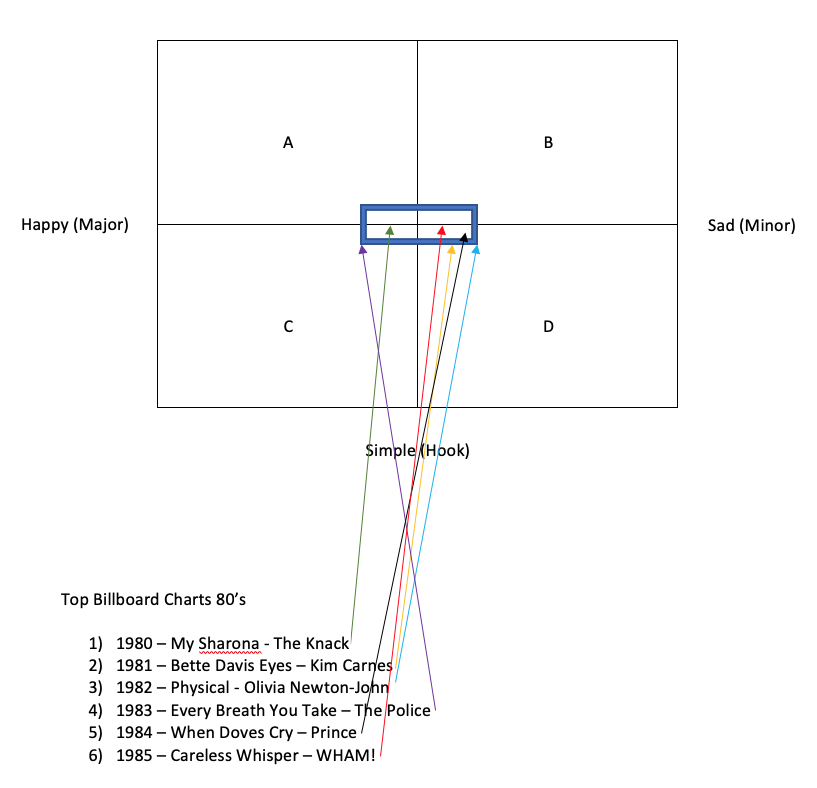The science of hit songs
Can there be a science to hit songs?
Can you predict what music will appeal to masses of people?
Can you predict what will not be a hit song?
Just like humor, and funny material – its hard to predict what will work on an audience until you try it. There are so many variables working at the same time, so much nuance.
After working for years in sound studios, and listening to music – this is a framework I think can help predict hits.
Why?
Good music can be perfectly written, yet, not match the audience. You can say that Mozart’s requiem is “perfectly” written – yet it will NOT fit a child’s birthday party. You can say that Happy by Pharrell Williams is “perfectly” written, but it will not fit a funeral.
The audience dictates how the music will be received. The blue rectangle in the chart below represents the “hit song” region. This region is where the music in the top of the charts usually ends up.
Listening to music, I first categorize it on the following 2×2 matrix:

While there are more vectors to music, such as beat, timbre, rhythm the two axis I plot are:
- Is it a major or minor key, that dictates if this is happy or sad song. The BPM (beats per minutes) are usually higher in happier songs and slower in sadder ones (like ballads).
- A melody line and chord progression, which begins with a simple hook on the low end (ear worm), and ends with complex chord progression in jazz.

Let’s look at the billboard top charts over the years and plot them:

References and Quotes:
